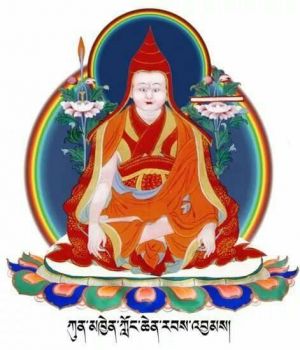Complete Instructions for Dzogchen Meditation
Complete Instructions for Dzogchen Meditation by Ven. Khenpo Tsewang Dongyal Rinpoche
A Dzogchen Overview
“Sentient beings have diverse capacities for understanding the true nature. This is why the Buddha gave so many different teachings. These teachings are like a vast banquet with all kinds of delicious dishes suitable to every taste.
The Buddha’s teachings can be grouped into three levels. The foundation level is the Hinayana, the second level is the Mahayana, and the third and highest level is the Vajrayana. All of the Hinayana teachings are contained in the Mahayana, and all of the Hinayana and Mahayana teachings are contained in the Vajrayana. This means the Vajrayana is the complete teaching of the Buddha.
The masters of the Nyingma school of Tibetan Buddhism divided the Hinayana, Mahayana, and Vajrayana into nine levels or yanas. Yana can be translated into English as “vehicle” or “carrier.” In the same way we just discussed, the first yana is contained in the second, the first and second yanas are contained in the third, and so on, until we reach the ninth and ultimate yana: Dzogchen. Dzogchen means “Great Completion” or “Great Perfection,” because it alone contains all the previous eight yanas, as well as itself. This means that Dzogchen is the all-encompassing, whole, complete teaching of the Buddha.
Over the centuries many people who practiced Dzogchen reached the highest levels of realization. While many people have attained the highest realization by practicing the teachings of other Buddhist schools, even more have done so within the Nyingma lineage through the practice of Dzogchen. Why is this? It is because Dzogchen is so clear, direct, and powerful. It is well known that many Dzogchen practitioners achieved the transcendental wisdom rainbow body. Other Dzogchen practitioners who did not achieve the rainbow body, and who are not known to future generations by titles like “great lama,” or “mahasiddha,” still achieved complete realization of the true nature. In humble, simple, quiet ways, these practitioners reached the ultimate goal of life.
In general, when we practice Dzogchen we accumulate and accomplish the two merits of skillful means and wisdom in union. If we separate skillful means and wisdom, and choose one and reject the other, our practice is not all-encompassing and complete, and is therefore no longer Dzogchen. In particular, this Aro teaching is based more on wisdom. In other words, it focuses on view and meditation. It is grounded more on the absolute level since it is a direct teaching on the true nature. Even so, if we want to actualize this teaching we still must practice it through the union of skillful means and wisdom.
Dzogchen is the highest teaching, and Dzogchen practitioners are of the highest capacity. The first of the Aro teachings, which we have already touched upon, are for high capability practitioners of the highest caliber. For these people the universe and their own minds are inseparable in the enlightened state. They experience all phenomena as pure, and do not create divisions such as “subject” and “object.” They abide in nonduality. With regard to their understanding, there is nothing to add and nothing to subtract, nothing to gain and nothing to lose—everything is in the Great Completion, Great Perfection state. Whether their minds are abiding or moving—nothing changes. Quiet and peaceful mind, active mind—it is all the same. Nor do they distinguish between meditation and post-meditation. Whatever comes, moves, changes, and goes is the manifestation of the natural state, spacious and free. These practitioners are beyond hope and fear of both samsara and nirvana. The teaching here says, “Originally enlightened—both appearance and mind itself.” Truly, for these practitioners everything is fulfilled. For the rest of us, this level of fulfillment is close at hand, even imminent, as long as we keep practicing.”
The Nature of Mind
Source
https://www.padmasambhava.org/2017/08/complete-instructions-for-dzogchen-meditation/
